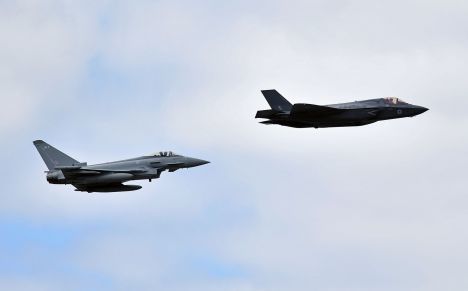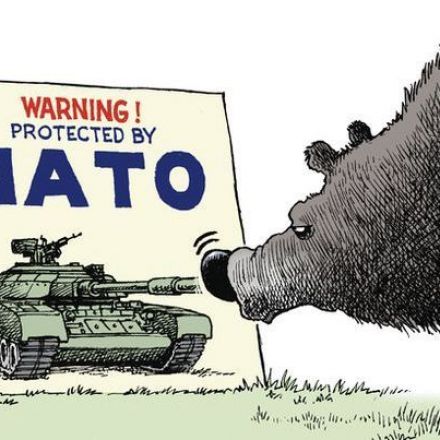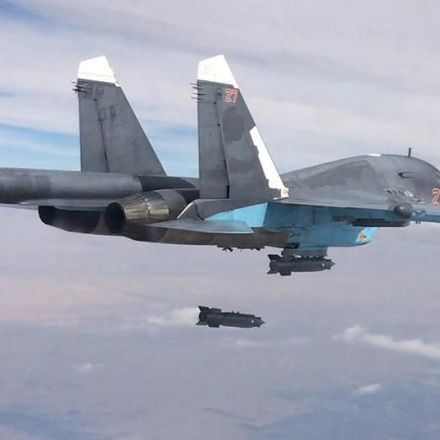NATO’s misfired weaponry or airstrikes on the Baltic countries
The Spanish Eurofighter Typhoon 2000 launched an AMRAAM-type air-to-air missile over Estonian territory Tuesday afternoon. All the Estonians are very shocked.
NATO’s misfired weaponry or airstrikes on the Baltic countries
The Spanish Eurofighter Typhoon 2000 launched an AMRAAM-type air-to-air missile over Estonian territory Tuesday afternoon. All the Estonians are very shocked.
The incident occurred on Aug. 7, 2018 at around 3:44 PM local time in the Pangodi area of Estonia’s Tartu County, which is situated less than 50 miles west to the country’s border with Russia.
The rocket is being searched by helicopters.
The Estonian army has started a large-scale search. The flight path, location and status of the missile are currently under investigation. The last assumed location of the missile is roughly 40 km to the north of the city of Tartu.
The AMRAAM type missile’s firing range is 100 km, it is 3.7 m long, 18 cm in diameter, and carries a live warhead. The missile carried explosives of up to 10 kilograms (22 pounds). It has a built-in self-destruct for such incidents, but may have landed on the ground.Spain is forced to explain why one of its jets fired a missile during a drill in the airspace of the Baltic country and NATO ally.
“A Spanish Eurofighter based in Lithuania accidentally fired a missile without causing any harm,” Spain’s defence ministry said in a statement, adding that the incident happened “in an area of southwest Estonia authorised for this type of exercise”. “The air-to-air missile did not hit any aircraft. The defence ministry has opened investigation to clarify the exact cause of the incident,” it continued. There are no known human casualties. Estonian Prime Minister Juri Ratas said on Facebook “thank God no human casualties,” calling the incident “extremely regrettable.”
After the incident, the Spanish Eurofighter Typhoon 2000, from that country’s Ala 11, or 11th Wing, based at Morón Air Base, safely landed at its base in Šiauliai in Lithuania.
So far there is no word on whether the launch was the result of any fault with the aircraft or pilot error. Whatever the case turns out to be, it’s definitely embarrassing for Spain, which is among the NATO members that spends the least on defense. It’s also not a great look for the Alliance as a whole, which has been under increasing pressure, especially from the United States, to reinvigorate its military capabilities after years of increasing neglect in many cases since the end of the Cold War.
The Spanish jet is part of NATO’s Baltic air-policing mission. Neighbouring to Russia and NATO countries Estonia, Latvia and Lithuania do not have their own fighter aircraft. Therefore the allies in the margin of the Baltic Air Policing mission since 2004 protect the Baltic airspace for their own account.
Spanish Eurofighters have suffered a number of accidents dating back all the way back to 2002, when the crew of a two-seat variant ejected safely after suffering a dual engine flameout. Additional crashes occurred in 2010 and 2017, killing the pilots in both cases, but there have been no other reports of misfired weaponry.
It is worth recalling the incidents caused by the errors of NATO, which led to human casualties.
“MISTAKES HAPPEN”
On February 22, 2010
NATO fired on a convoy of three vehicles in Gujran district of the province of Daykundi, killing at least 33 civilians including four women and one child and injuring 12 others while they were on their way to Kandahar.
On April 7, 2011
A NATO airstrike hit a Libyan rebel position near the contested oil town of Brega on Thursday killing up to five people, rebel fighters and a hospital nurse said. It was the second time in less than a week that rebels said NATO had bombed their comrades by mistake. Thirteen were killed in an air strike not far from the same spot.
On May 29, 2011
Afghan authorities said Sunday NATO had killed 52 people, mostly civilians, in airstrikes. In the southern province of Helmand at least 14 civilians, including women and children, were killed and six injured in an air raid. The dead included five girls, seven boys and two women.
On February 13, 2013
A NATO airstrike in eastern Afghanistan has killed 10 civilians, five of them children, and wounded five other children.
On July 20, 2015
At least seven Afghan soldiers were killed by a NATO air strike that mistakenly hit their post in a province south of Kabul in the midst of a battle against Taliban militants. The mistake was likely the result of poor coordination between Afghan forces and the international coalition.
On July 12, 2016
A U.S. airstrike killed nearly 60 civilians, including children, in Syria after the coalition mistook them for Islamic State fighters.
On April 12, 2017
An airstrike by the U.S.-led coalition in Syria mistakenly killed 18 soldiers from a U.S. The incident was the fourth time since early March that American-led airstrikes may have killed noncombatants.
According to some estimates, up to 200 people died during a March 17 airstrike in Mosul, Iraq’s second largest city. It was potentially the largest single loss of innocent lives to U.S.-led coalition strikes since the fight against the Islamic
-
 NATO’s misfired weaponry
NATO’s misfired weaponry
 Airstrikes on the Baltic countries
Airstrikes on the Baltic countries




























Join the Discussion